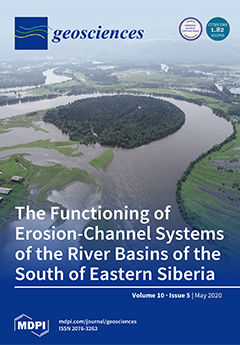Many soil regulating ecosystem services (ES) are linked to Earth’s atmosphere, but associated monetary values often are unknown or difficult to quantify. Atmospheric deposition of calcium (Ca
2+) and magnesium (Mg
2+) are abiotic flows (wet, dry, and total) from the
[...] Read more.
Many soil regulating ecosystem services (ES) are linked to Earth’s atmosphere, but associated monetary values often are unknown or difficult to quantify. Atmospheric deposition of calcium (Ca
2+) and magnesium (Mg
2+) are abiotic flows (wet, dry, and total) from the atmosphere to land surfaces, which potentially can become available to sequester carbon (C) as soil inorganic carbon (SIC). However, these processes typically have not been included in economic valuations of ecosystem services. The primary objective of this study was to demonstrate an approach for valuing non-constrained potential SIC sequestration from atmospheric Ca
2+ and Mg
2+ deposition based on the concept of the avoided social cost of carbon dioxide emissions (SC-CO
2). Maximum monetary values associated with the non-constrained potential SIC sequestration were compiled for the contiguous United States (U.S.) by soil order, land resource region (LRR), state, and region using available deposition data from the National Atmospheric Deposition Program (NRSP-3). For the entire contiguous U.S., an average annual monetary value for the non-constrained potential SIC sequestration due to atmospheric Ca
2+ and Mg
2+ deposition was $135M (i.e., $135 million U.S. dollars, where M = million = 10
6). Mollisols, Alfisols, and Entisols were soil orders with the highest average annual monetary values for non-constrained potential SIC sequestration. When normalized by land area, however, Vertisols had the highest average annual monetary values followed by Alfisols and Mollisols for non-constrained potential SIC sequestration. From a more agricultural perspective, the LRRs with the highest average annual monetary values for non-constrained potential SIC sequestration were the Western Range and Irrigated Region (D), the Central Feed Grains and Livestock Region (M), and the Central Great Plains Winter Wheat and Range Region (H). When normalized by area, the LRRS with the highest average annual monetary values were the Southwest Plateaus and Plains Range and Cotton Region (I) and the Florida Subtropical Fruit, Truck Crop and Range Region (U). Among the U.S. states, the highest average annual monetary values for non-constrained potential SIC sequestration were Texas, Kansas, and New Mexico, but when normalized by area the highest values by state were Kansas, Iowa, and Texas. Geographical regions in the contiguous U.S. with the highest average annual monetary values for non-constrained potential SIC sequestration were the South Central, Midwest, and West; when normalized by area, the highest values by region were South Central, Midwest, and Northern Plains. Constraints on maximum monetary values, based on physical, chemical, biological, economic, social, and political limitations, need to be considered and quantified to obtain more precise and accurate accounting of the ES associated with SIC sequestration due to atmospheric Ca
2+ and Mg
2+ deposition.
Full article





